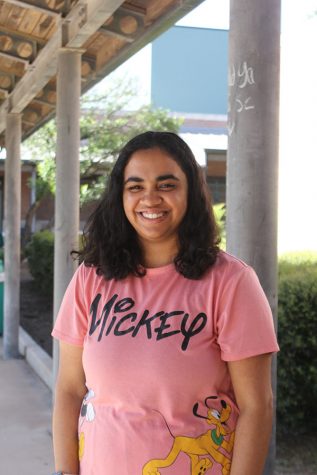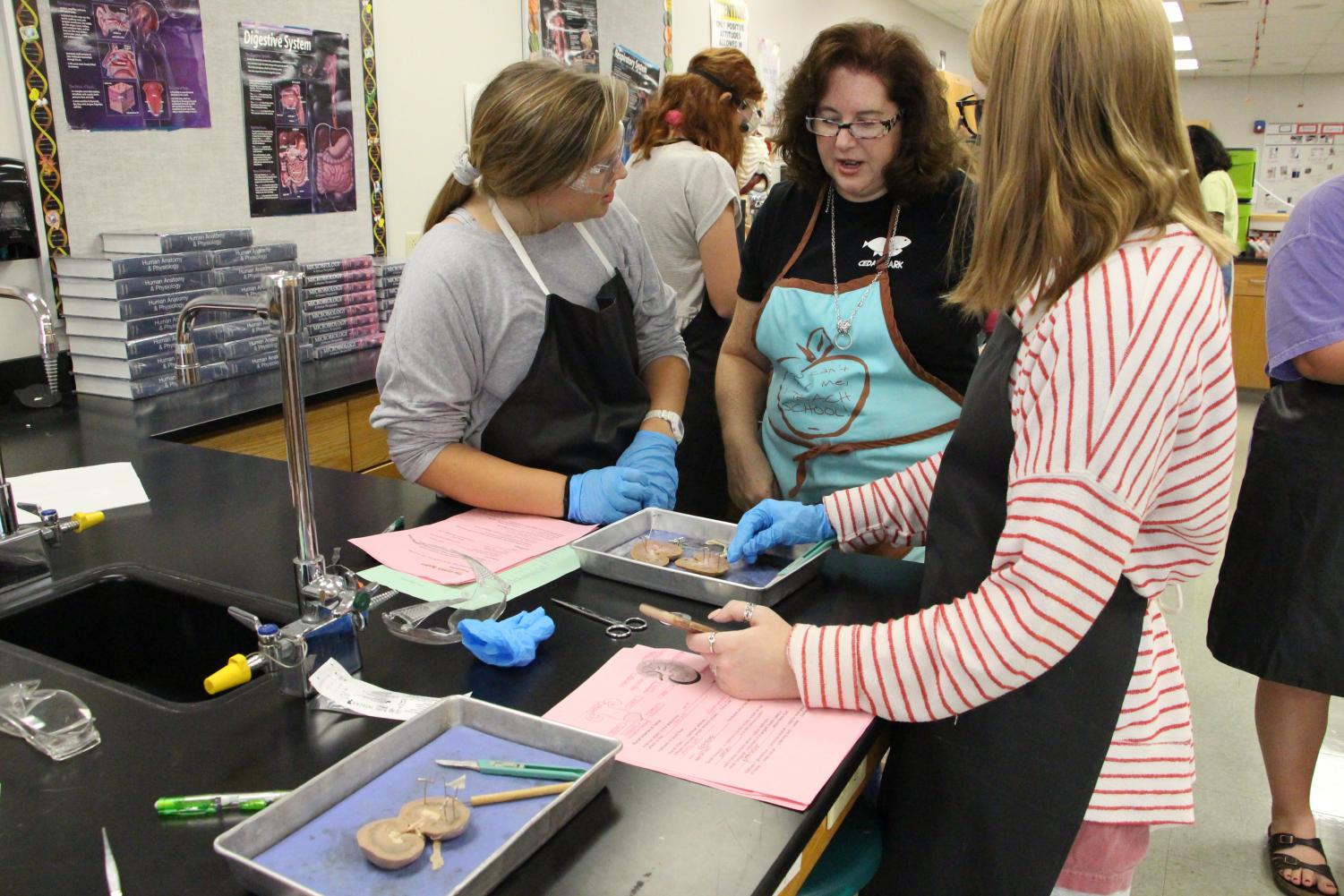In their later years of school, students learn to dissect animals in their biology classes in order to get a closer look at how the body systems of different beings are structured and how they function. For example, when the students are dissecting a heart, they can feel the valves and see the differences in how they work, according to Anatomy and Physiology, Principals of Biomedical Science and Medical Microbiology teacher Nancy Matthias.
“Live dissection gives [the students] an opportunity to actually feel the tissue,” Matthias said. “When the live specimen is 3D, they can see it, manipulate it, and [this makes it] a much better way to dissect and learn about the different organs and the body.”
But, there has been a talk of the inhumanity of this practice. According to Last Chance for Animals (LCA), an organization that dedicates itself to the wellbeing of animals, over six million animals are killed for dissection. Many students have expressed discomfort when dissecting these animals as well.
“It is really gross, in my opinion,” sophomore Kinley Lynch said. “I don’t like that the animals are unwillingly sacrificed for dissection and that they have no control over it.”
LCA also lists the possible dangers of live animal dissection for students. Because the animals used for dissection are absorbed in formaldehyde, this can cause cancer, as well as nausea and dizziness.
However, according to PETA, there are many virtual options for dissection. Below are some of the options.
1. Expandable Mind Software (eMind): This website has many options when it comes to dissection. It offers the dissection of many different animals such as fish, pigs, cats, frogs, and even cells. For each of the animals, eMind provides the student with both external and internal perspectives of the animal. As well as a miniature lab at the end of the course. eMind also provides a look inside the system of different breeds of animals.
2. McGraw-Hill: Anatomy and Physiology: For students who are enrolled in the more advanced biology classes, it presents the students with a deep insight into a human cadaver, and it also provides insights into the organs as well.
3. Cogent Education: This website puts students in the role of a professional scientist who is tasked with solving real world problems. These problems relate to appropriate high school biology topics such as homeostasis, action potential, enzymes, and more. Students can sign up and begin learning.
4. SynDaver , which is a website off of which students and teachers can purchase silicone organs and body parts. Body parts include those of animals, such as felines, and humans. There are also silicone bodies for students to look at as well. Body parts include many major organs and even tissues.
5. Virtual Dissection Table. This is not a website, but a table that students can learn dissection through. According to EducationWeek.com, students can operate the table through its touch screen feature and examine every organ inside the human cadaver. They can also cut through the skin and the organs to get a closer look. This table was created by Anatomage, a 3D medical technology company.
Now, there are several benefits of digital dissection tools. According to EducationDive.com, dissecting digitally can not only benefit the learning of students, but help the school as well. For one, the schools can cut costs. This is mainly because the cadavers and animals are costly. According to freshman biology teacher Wendy Conner, the animals that our school buys for dissection is very expensive.
“For four students to dissect one rat or mouse, it can range anywhere from $9 to $12 per specimen, without the shipping,” Conner said. “If you’re talking about 120 biology students dissecting, it can get very expensive.”
Another benefit is the chance of a comfortable experience for those students who are highly uncomfortable with live specimens. Another benefit is the reusable feature. According to a survey on Shannon Shackles.wixsite.com, a website for teachers on the dissection of animals, many teachers agreed with virtual dissection in favor of its reusable feature. Due to the increasing amount of students in the biology classes, the teachers find themselves in need of many specimens.
“For the freshman biology classes this year, there is a total of 135 lab groups, roughly,” Conner said. “We would need 135 specimens for all freshman biology students to share.”
Some teachers have adapted and have found ways to look at multiple organs without overspending.
“We dissect for as many systems as I can get,” Matthias said. “We can’t open up the bones very well in a skeleton, however, we do use real chicken wings and we break the bones so you can see the marrow. For muscles, we skin a rat to actually see the muscles and pull them off the rat.”
The last benefit is effectiveness in the learning abilities of students. In a study done by Joseph Paul Akpan, a professor of Science Education at Jacksonville State University, and Thomas Andre, an emeritus professor at Iowa State University, students who engage in virtual dissection are shown to perform better on tests than those who do dissection traditionally. The study involved three groups of students: one performed a virtual and then traditional dissection, the other did traditional, and virtual and the third only did traditional dissection.
Despite all these benefits, however, there are some strong drawbacks to the virtual possibility of dissections.
“The part that you would have trouble replacing with the virtual dissections is that there isn’t much you can do to simulate the weight, the depth of skin tissue, the fragility of the organism and the wonder of it, frankly,” Conner said. “When you actually get to stop, hold, feel, and interact with the thing that was once alive.”
Some websites, according to Conner, do not go through the whole process of dissection.
“[The virtual alternatives] look good,” Conner said. “The alternatives that are free are often not that great. The science department would have to be willing to spend the money on these more interactive dissections and better visuals. The ones that have been posted by teachers or the organizations who made them themselves are often pretty simplistic and just have stand-alone photos instead of having any kind of systematic or kind of click-through process to go through the whole dissection.”
In an article by Michelle Moscova, a senior lecturer in anatomy at the University of New South Wales in Australia, there are variations among the way humans are created, and these cannot be simulated well by the virtual software. Students can experience these variations through live dissection. Also, the sense of touching the organs is important for the medical field because this will tell the student whether the organ is healthy or not. For example, if students wish to become a surgeon, then they must get used to touching the flesh of a human or animal.
“We dissect anything that I can get my hands on,” Matthias said. “That hands-on feeling, the texture [of the organs] is very vital.”
Moscova also says that the students’ ethical perspectives are more developed, as they are taught to respect the animals or people who gave their bodies to science.
“I definitely talk to my students about the way they treat the organism,” Conner said. “Since we are using it for the purpose of science, I make sure to talk to them about the inappropriateness of any kind of mutilation or harassment of the dead animal. If we are going to use it to study, then it is best to be appropriate about it.”
According to Edulab.com, dissection actively engages the students. They will be able to gather more information and understand it better when they get to experience the real organs.
“Dissection is really cool because it gives you an insight on what goes on underneath your skin,” sophomore Carlton Marcom said. “And these are things you don’t get to see every day. I am interested in the medical field and being able to see how the body works in different ways by being able to do it hands-on and visually see the amazing and intricate body [is a wonderful experience].”
As far as animal treatment is concerned, Socratic.org, a Question and Answer forum in which science professionals answer questions list the principles upon which the dissection of animals is governed. Firstly, the anatomy and physiology of the organisms should be similar to other animals or humans. Secondly, their reproductive cycle should produce more than one offspring at one go, so as to prevent population issues. Thirdly, they shouldn’t be on the endangered species list. Lastly, they should have a relatively short natural lifespan. Taking these principles into consideration, people are making sure that the animals don’t suffer from this from a demographic standpoint. From the ethical standpoint, the organs used for dissection are not necessarily harvested, Matthias said.
“I don’t think live dissection is cruel to the animals,” Matthias said. “The only way we can really learn about the anatomy of the animals and the anatomy of the human body is to perform those dissections. They are specially preserved. For example, in the process of slaughtering a pig for bacon or ham, they take the organs out that way. They don’t specifically harvest organs for dissections. They can get those from the slaughterhouses.”
Dissection has been traditionally done live for many years now. But, as we are moving into a technologically advanced world, we are constantly finding ways to incorporate hands-on activities and making them digital. However, sometimes the virtual way cannot replace hands-on experience.
“I don’t think [virtual dissection] is a barrier,” Matthias said. “I just don’t think a virtual lab gives you the whole experience. It’s a different kind of way you would use your brain because you are only seeing it, whereas when you can actually touch [the animal], your kinesthetic skills are better utilized by dissecting a live thing.”



